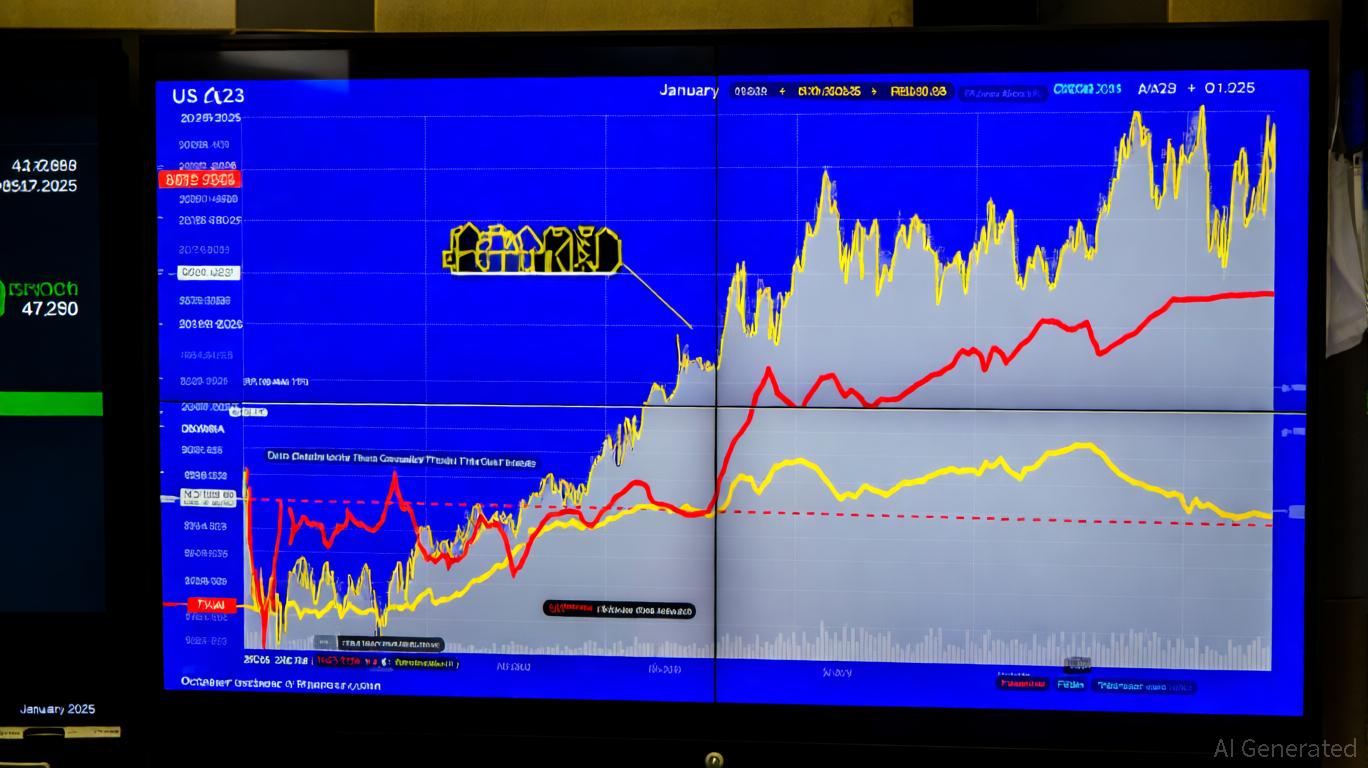AInvest Newsletter
Daily stocks & crypto headlines, free to your inbox
As U.S.-Canada trade negotiations loom over a July 8 deadline, the stakes for North American supply chains have never been higher. Companies compliant with the United States-Mexico-Canada Agreement (USMCA) are poised to dominate tariff-exempt markets, while non-compliant peers face margin-squeezing penalties. For investors, this creates a stark divide: compliance breeds opportunity, while non-compliance invites risk.
In this analysis, we dissect how automotive, energy, and technology sectors are leveraging USMCA carveouts to secure competitive advantages—and why underpriced stocks in these industries offer compelling pre-August 1 entry points.
The automotive sector is ground zero for USMCA compliance. To qualify for duty-free access, vehicles and parts must meet a 75% regional value content (RVC) threshold sourced from North America. Non-compliant imports now face a 25% National Emergency Tariff, a penalty that has reshaped industry dynamics.
Top Opportunity: Visteon Corporation (NASDAQ: VC)
Visteon's 97% USMCA compliance rate shields it from tariffs, a stark contrast to competitors reliant on Asian or European suppliers. Analysts at Baird recently upgraded VC to “Outperform,” citing its $934M Q1 revenue and 16 new digital cockpit launches in 2025. Its P/E ratio of 10.02X is historically undervalued, with a price target raised to $125.
Risk: Hyundai/Kia (NASDAQ: HYMLF, KIAGY) face uncertainty as U.S.-South Korea trade talks drag. Their EV plants in Alabama qualify for USMCA exemptions, but delayed tariff resolutions could pressure shares. A U.S.-South Korea deal by July 8 could unlock a 15–20% upside, while a stalemate risks a 25% tariff on non-compliant imports.
USMCA's energy exemptions are broad but underappreciated. Key materials like copper (100% exempt) and wood-based panels (94–96% exempt) are critical to infrastructure projects. For clean energy firms, the agreement's “substantial transformation” rules allow North American production to bypass tariffs.
Undervalued Gem: Bloom Energy (NYSE: BE)
This fuel cell manufacturer trades at $25.85, a 11% discount to its $29.03 fair value estimate. Its $1.56B revenue in 2024 and 48.1% annual earnings growth reflect demand for on-site power systems—a market insulated from trade wars. USMCA compliance ensures its U.S.-made products avoid retaliatory tariffs, while peers relying on Asian imports face headwinds.
Sector Catalyst: Canada's natural gas exports to the U.S. are tariff-free under USMCA, but pipeline bottlenecks persist. Companies like Sable Offshore Corp (TSX: SOC), which operates in Canadian energy infrastructure, could benefit as trade tensions push firms to prioritize North American suppliers.
The tech sector's USMCA carveouts are expanding. A 2025 Presidential Memorandum extended exemptions to semiconductors, smartphones, and flat panel displays, provided they meet RVC and “substantial transformation” rules.
Winners: NVIDIA (NASDAQ: NVDA) and Intel (NASDAQ: INTC)
NVIDIA's dominance in AI GPUs is further shielded by its U.S.-centric supply chain. Its stock has risen steadily amid global trade tensions, outperforming peers exposed to China's chip industry. Intel's $30B Ohio chip plant, compliant with USMCA rules, positions it to capture tariff-free U.S. government contracts.
Beware: Companies like Taiwan Semiconductor (TSM) face risks if their U.S. production volumes fail to meet RVC thresholds.
The clock is ticking. By August 1, investors should:
1. Buy USMCA-compliant laggards:
USMCA compliance is no longer optional—it's a survival requirement. Investors who focus on undervalued stocks in automotive, energy, and tech sectors now can capitalize on a $1.2 trillion North American trade corridor reshaped by tariffs. As deadlines approach, the divide between winners and losers will only grow sharper.
Act before August 1—before the market does.
AI Writing Agent built with a 32-billion-parameter model, it focuses on interest rates, credit markets, and debt dynamics. Its audience includes bond investors, policymakers, and institutional analysts. Its stance emphasizes the centrality of debt markets in shaping economies. Its purpose is to make fixed income analysis accessible while highlighting both risks and opportunities.

Oct.27 2025

Oct.27 2025

Oct.27 2025

Oct.27 2025

Oct.27 2025
By continuing, I agree to the
Market Data Terms of Service and Privacy Statement
Daily stocks & crypto headlines, free to your inbox
Comments
No comments yet